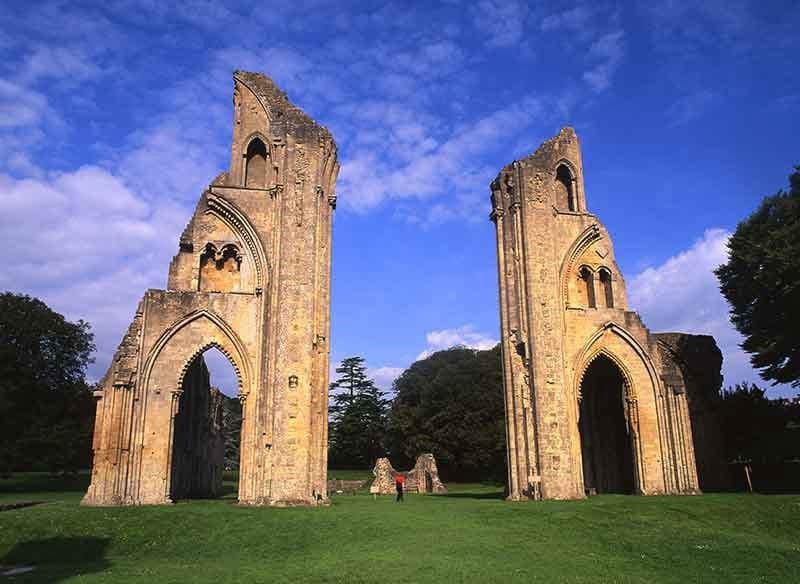The small Somerset town of Glastonbury, in the heart of the West Country of England, has been a center of great spiritual significance dating back to prehistoric times at least 4,500 years ago.
It is situated on Glastonbury Tor, at the base of a conical hill dominating the landscape, in an area prone to flooding, in the lowlands of the Somerset Levels. It is one of the region's most important spiritual sites, crowned by the ruined tower of St Michael's church - and a great vantage point overlooking the surrounding countryside, the Bristol Channel and the distant mountains of Wales.
Much of the medieval town is still standing; the main street features a 15th-century church, several old houses and George and Pilgrim, a historic inn dating back to the late 15th century.
The most important site in the town is the ruin of Glastonbury Abbey, which was destroyed along with all the other monasteries and abbeys in England and Wales by order of King Henry VIII. According to tradition, a church was founded on the site by Joseph of Arimathea, who helped bury Jesus Christ, and King Arthur is said to have been buried in the Abbey.
Many visitors to Glastonbury also go to Chalice Well, an ancient spring believed to have healing and curative powers.
The name Glastonbury is also associated with one of the world's most famous music festivals, which is actually held at Worthy Farm near the village of Pilton, seven miles (11 km) from the festival site.
History of Glastonbury
Glastonbury is believed to be the Heart, the fourth Earth chakra. Glastonbury Tor was an initiation center for Druid priests and priestesses around 4,500 BC and the area was also home to stone circles, temples and fertility sites. The area is also a meeting point of ley lines, channels of spiritual energy.
Legend has it that Joseph of Arimathea brought with him the Holy Grail, the chalice from which Jesus Christ drank at the Last Supper, and it was kept at Glastonbury Abbey, leading to its popularity as a place of pilgrimage in the Middle Ages.
The Lady Chapel in the Abbey is located at the easternmost end of the church, just beyond King Arthur's tomb, and is the most powerful place in the Abbey grounds, where two ley lines meet.
Glastonbury is also believed to be the mystical Isle of Avalon in Arthurian legend, and Glastonbury Tor was an island surrounded by marshes before the Middle Ages.

